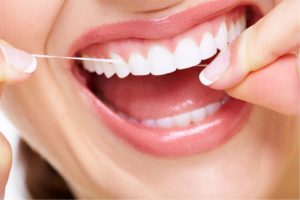Prevention and hygiene
Prevention and hygiene – what is it?

Prevention and hygiene – indications and contraindications
Indications
Contraindications
Dental prophylaxis is a necessary element of treatment. In our clinic, each patient during the first visit gets a hygienization procedure, which not only enables further treatment but also significantly increases the patient’s comfort and improves his or hers quality of life. The patient may be referred to additional hygienisation by another specialist, whenever there is need for this. Cured patients or those without any dental complaints should report for preventive visits at least once every six months, so that the doctor can carry out a full dental review and improve oral hygiene, if required.
In fact, there are no contraindications for preventive visits and regular hygienization procedures. You should avoid overzealousness in this case and follow the doctor’s instructions regarding the frequency of follow-up visits. It has been shown that too frequent professional tooth cleaning can contribute to faster wear of teeth. Everything in moderation.
Prevention and hygiene – types of treatments
Hygienization is often referred to as the first phase of dental treatment. Professional teeth cleaning of plaque and tartar is necessary for subsequent procedures. On children’s teeth, tartar is rarely present, therefore we remove only plaque and polish teeth. For adults, we perform complete scaling over the gum with polishing and sandblasting. Application of fluoride preparations that strengthen the enamel and increase its resistance to decay is also an important element of prophylactic treatments.
Prevention and hygiene – the course of the procedure
Hygienization is usually short and pleasant for children. It involves cleaning the tooth surface with a paste, sometimes using hydrogen peroxide (in case of gingivitis). The treatment is completely painless and does not differ much from brushing teeth with an electric toothbrush.
For adults we perform scaling with ultrasound tools that quickly and painlessly remove tartar. During this procedure, be prepared for a large amount of water from the tip of device. Water not only cools the surface of the tooth, which heats up under the influence of ultrasound, but also causes cavitation effect, facilitating the breaking of the stone. Scaling is always finished by polishing with a special paste. The last element of prophylaxis is the removal of dental plaque by sandblaster. During this procedure it is necessary to use special protection screens, on the eyes and face, because the face of the patient and the doctor may be sprayed with abrasive material.
After purification, fluoride preparations are used for both children and adults. For children under 6 years, fluoride varnishes are recommended, for children over 6 years, it is allowed to use gels and rinses. The doctor applies appropriate preparation, which after a few minutes should be spitted out, without rinsing the mouth, so that as much of the remedy as possible remains on the teeth. Also, patient should not eat or drink for 2 hours after the procedure. Professional prophylaxis in the dental office must always be supplemented with home prophylaxis: teeth brushing with fluoride toothpaste (up to the age of 6, a paste with a limited amount of fluorine 1000 ppm, then a normal amount of 1450 ppm), possibly rinses.
Prevention and hygiene – frequently asked questions (FAQ)
Pricing
| Anesthesia | Free |
| Temporary dressing | Starting at 150 PLN |
| Filling in a milk tooth | Starting at 200 PLN |
| Light-curing filling | Starting at 350 PLN |
| Removal of tartar, fluoridation, sealing | 400PLN |
| Fluoridation | 50 PLN |
| Tooth sealing | 250 PLN |
| Whitening of a dead tooth | Starting at 450 PLN |
| Overlay whitening 1 arch | 650 PLN |
| Whitening with the lamp on 1 visit | 1200 PLN |
| Relaxation rail 1 arch | 500 PLN |
